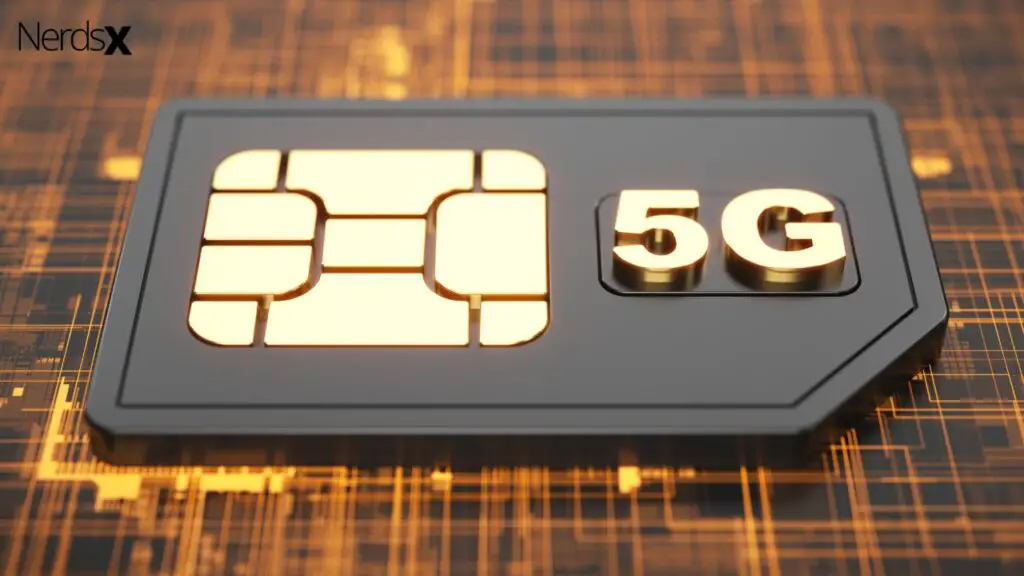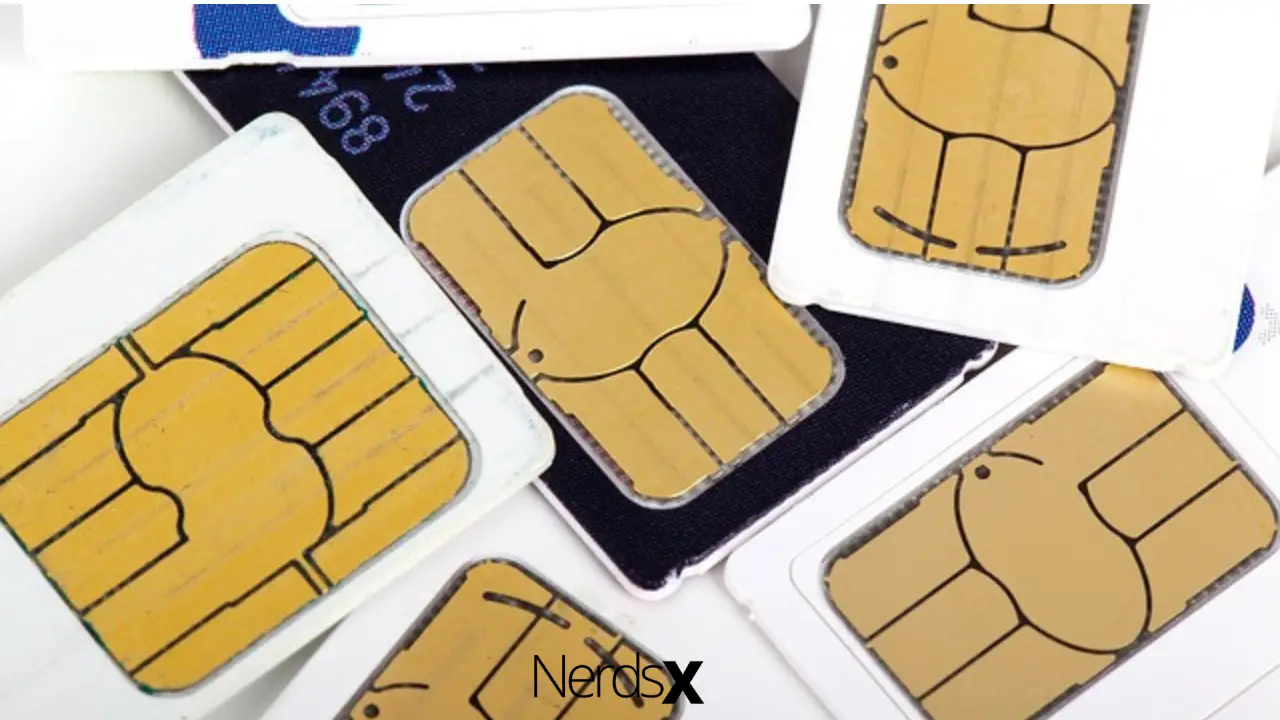An IoT (Internet of Things) SIM card is a specialized SIM card for connecting devices to the internet. It enables machine-to-machine communication, used in various IoT applications like smart devices and sensors.
Key Takeaways
- Both IoT and regular Sims enable the user to connect to internet-enabled devices.
- IoT Sim cards are more durable than regular Sim cards.
- IoT Sims offer optimal security to your IoT devices.
- The storage capacity of IoT Sims is more compared to traditional Sims.
- It’s easy to manage IoT devices using an IoT Sim as management is done in bulky from a central point.
- You can secure your IoT Sim card with a private APN or fixed IP address.
What is an IoT SIM card?
An IoT SIM card, also known as an M2M (Machine-to-Machine) SIM card, is a specialized SIM card designed for use in IoT (Internet of Things) devices. IoT devices are devices that are connected to the internet and can collect and exchange data. These devices can range from simple sensors to complex machines. IoT SIM cards allow these devices to connect to cellular networks and exchange data with other devices and services.
The future of IoT SIM cards
The use of IoT SIM cards is expected to grow rapidly in the coming years, as the number of IoT devices continues to increase. According to Statista, the number of IoT devices worldwide is expected to reach 27 billion by 2025. This growth will be driven by the increasing adoption of IoT technologies in various industries, such as manufacturing, healthcare, transportation, and retail.
As the number of IoT devices increases, the demand for IoT SIM cards will also increase. This will create opportunities for new players to enter the market and offer innovative IoT SIM card solutions. Additionally, the development of new technologies, such as 5G and NB-IoT, will further enhance the capabilities of IoT SIM cards and expand their range of applications.
In summary, IoT SIM cards are an essential component of the IoT ecosystem, enabling connectivity and data exchange for a wide range of devices. As the IoT continues to grow, IoT SIM cards will play an increasingly important role in connecting the world’s devices and enabling new applications and services.
The Benefits of IoT SIM Cards
- Customized Data Plans: IoT SIM cards offer flexible data plans tailored to specific device needs, optimizing cost-effectiveness.
- Low Data Consumption: Ideal for low-bandwidth IoT devices, reducing data costs.
- Remote Device Management: Centralized control and monitoring of multiple IoT devices via IoT platforms.
- Global Coverage: IoT SIM cards often work on multiple carriers, ensuring worldwide connectivity.
- Enhanced Security: IoT SIMs may provide added security features, safeguarding sensitive IoT data.
- Scalability: Easy scaling as your IoT deployment grows, making it cost-effective for large-scale applications.
- Longevity: Extended lifecycles and durability, minimizing maintenance.
- Cost Savings: Cost-efficient options for low-maintenance, long-term IoT deployments.
- Dedicated IoT Support: IoT SIM providers offer specialized customer support for IoT use cases.
- Machine-to-Machine Communication: Optimized for IoT device communication, promoting efficiency.
- E-SIM Compatibility: Support for e-SIMs allows easy, over-the-air provisioning and management.
- Reduced Complexity: Simplified IoT connectivity management, reducing operational complexities.
Similarities and Differences Between IoT Sim Card and a Traditional Sim Card
While a traditional SIM card might share a few similarities with the IoT Sim card, they also have significant differences. Here are the similarities and differences:
The Similarities Between IoT and Traditional Sim Cards
- Connectivity: Both types of SIM cards facilitate connectivity to cellular networks, enabling devices to transmit data and access the internet.
- Identification: They serve as unique identifiers for devices on the network, allowing for secure communication.
- Network Compatibility: Both types of SIM cards can work on various network technologies like 2G, 3G, 4G, and 5G, depending on the SIM and device compatibility.
- Data Plans: IoT and traditional SIM cards offer data plans with different data volumes, allowing devices to send and receive data.
- Activation: They require activation and registration, typically done through a carrier or online platform.
The Differences Between IoT and Traditional Sim Cards
While the traditional Sim card only keeps devices connected to the internet, IoT Sims can keep the devices connected and remotely manages them. IoT Sims are usually activated in bulky, but the regular Sims get activated one at a time.
Below are some of the notable differences between IoT and regular Sims:
1. The Difference in Durability
IoT Sims are designed to survive in extreme conditions such as exposure to humidity, low temperatures, and rain, whereas traditional Sims can’t survive in such conditions. While a traditional Sim card has a lifespan of around three years, an IoT Sim card can last up to ten years.
2. Storage Capacity
Another significant difference between the two is that IoT Sims have an extended memory capacity compared to their traditional counterparts. The reason why IoT Sim cards have a larger capacity is down to their functionality. In most cases, they are mounted in remote locations, meaning you can’t retrieve the delivered data regularly.
3. Difference in Security
IoT/M2M traffic is secure since it is always segregated from the mobile carriers’ core network data. To achieve the security objective in IoT Sims, APNs and private access points perform the core function of segregating data.
4. Flexibility
Unlike traditional Sims, which are solely managed from one device, IoT Sims offer flexibility. You can control the Sims from one platform, allowing you the flexibility to control all your devices and Sim cards from a central location.
5. Cost
IoT Sims enjoy special data tariffs that make them cost-effective compared to regular Sim cards. Also, there’s data pooling in M2M Sims, which enables the devices to pass unused data to other devices, ensuring better utilization of your data bundles.

6. Global Roaming
As opposed to regular Sim cards, IoT Sim cards get standardized regional tariff structures. You must use IoT cellular connectivity to access the global network with M2M eSims.
Different Sizes of IoT Sim Cards
IoT Sim cards are of different sizes ranging from mini, micro, to nano Sim cards. The common sizes are:
- Mini-Sim (2FF): The 2FF Sim card is commonly used in vehicles, paying points, and vending machines. These Sims measure 25mm × 15mm ×0.76mm.
- Micro-Sim (3FF): The Micro-Sim measures 15mm ×12mm, and is typically used in portable devices such as mobile to IoT devices, tablets, GPS, and smart health devices.
- Nano-Sim (4FF): The Nano-Sim measures12.3mm ×8.8mm, meaning it is 40% smaller than the micro-Sim. Although the nano-Sim is suitable for small devices, it’s not well-protected; therefore, not ideal for use by devices in an extreme environment.
- Embedded Sims (MFF2): Embedded Sims measure only 6mm×5mm ×1mm, and they are directly soldered into IoT devices, meaning you don’t have to install them. These Sims are the most durable and popular among the IoT Sim options.
Besides these Sims, we also have full-size Sim (1FF), measuring the size of a typical credit card. This Sim is no longer used in the latest devices.
Different IoT Sim Models
IoT Sims come in three models:
Standard IoT Sim Cards
The standard Sims work relatively well in non-harsh or less harsh surroundings. Standard IoT Sims borrow heavily from traditional Sims, but they have exceptional features that will connect and manage your IoT devices.
Industrial IoT Sim Cards
These Sims are designed to resist harsh conditions such as corrosion, high temperatures, humidity, vibrations, rain, etc. They are more durable than their standard counterparts.
Automotive IoT Sim Cards
Automotive IoT Sims are mainly used in motor vehicles and are designed for durability, just like industrial Sims. They are resistant to harsh and extreme conditions such as rain, humidity, corrosion, extreme temperatures, harsh weather, and vibrations associated with moving vehicles.
The Function of eUICC in IoT Sims
eUICC is an acronym for embedded universal integrated circuit card. The software allows a single Sim to hold more than one mobile network profile by eliminating the Sim’s profile lock.
eUICC restricts UICC (Universal Integrated Circuit Card) from migrating to another physical Sim as it has nothing to do with physical embedding.
Uses Of IoT Sim Card
We encounter many devices powered by IoT Sims in modern times. Examples of devices that use IoT Sims include:
- Solar panels.
- Valves.
- Batteries.
- Electricity meters.
- Drug dispensers.
- Robot arms.
- Vehicles.
- Air quality sensors.
- Security cameras.
- Irrigation units.
Securing IoT Sim Cards
If not properly managed, IoT Sims can pose a security challenge. Therefore, ensuring your IoT devices’ security should be prioritized. Here is how you should keep the IoT Sim safe:
Private APN
IoT Sims use a private APN (Access Point Name), not a standard one, to ensure optimal security for your devices. A private APN only allows devices with the correct credentials to connect to the network as opposed to the regular cellular network.
An APN assumes the role of a middleman between a network and a device attempting to connect. Therefore, the connecting device must have a Sim with access credentials.
APN is beneficial because no one can connect to your IoT devices without access to your entire network.
Fixed IPs
M2M Sims are usually configured to fixed IPs to ensure added layers of protection. With a fixed private or public IP, you are assured that attackers can’t access your devices.
The benefit of a fixed IP address is that it guarantees you control of your IoT devices while providing end-to-end security encryption.
References

